Abstract
1. It was proposed [Johnson (1974) J. Neurochem. 23, 785–789] that an essential step in the genesis of delayed neuropathy caused by some organophosphorus esters was aging of phosphorylated neurotoxic esterase, involving generation of a charged monosubstituted phosphoric acid residue on the protein. 2. Neurotoxic esterase of hen brain was inhibited with di-isopropyl phosphorofluoridate either unlabelled or mixed-labelled with 3H and 32P. 3. Reactivation of inhibited enzyme by KF was possible only immediately after a brief inhibition:aging at pH8.0 and 37°C occurred with a half-life of about 2–4min. 4. When the radiolabelled enzyme was studied no loss of label was observed during the expected aging period, but a change in the nature of the bound radioisotopes occurred (half-life=3.25min). 5. Alkaline hydrolysis of labelled enzyme liberated di-isopropyl phosphate at early times after labelling, but increasing amounts of monoisopropyl phosphate plus a volatile tritiated compound (possibly propan-2-ol) at later times. 6. Treatment of labelled enzyme with KF released di-isopropyl phosphate and caused reactivation of enzyme to similar degrees. It is concluded that the chemical change from di-isopropyl phosphoryl-enzyme to mono-isopropyl phosphoryl-enzyme and the loss of reactivatibility are related. 7. The rate of aging is similar at pH5.2, 6.5 and 8. Aging is unaffected by addition of reduced glutathione and imidazole at pH5.2 or 8, and none of the transferred 3H is trapped by these reagents. The mechanism of aging must be different from the better-known dealkylation aging of the cholinesterases.
Full text
PDF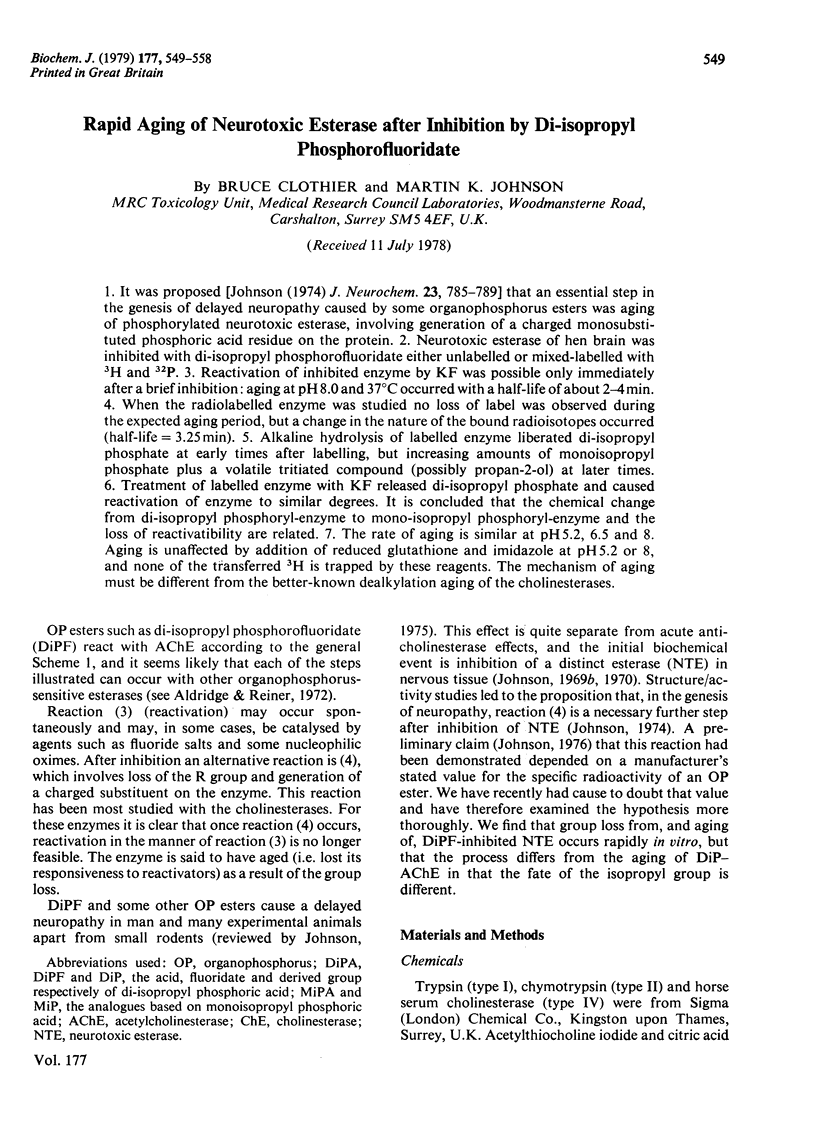
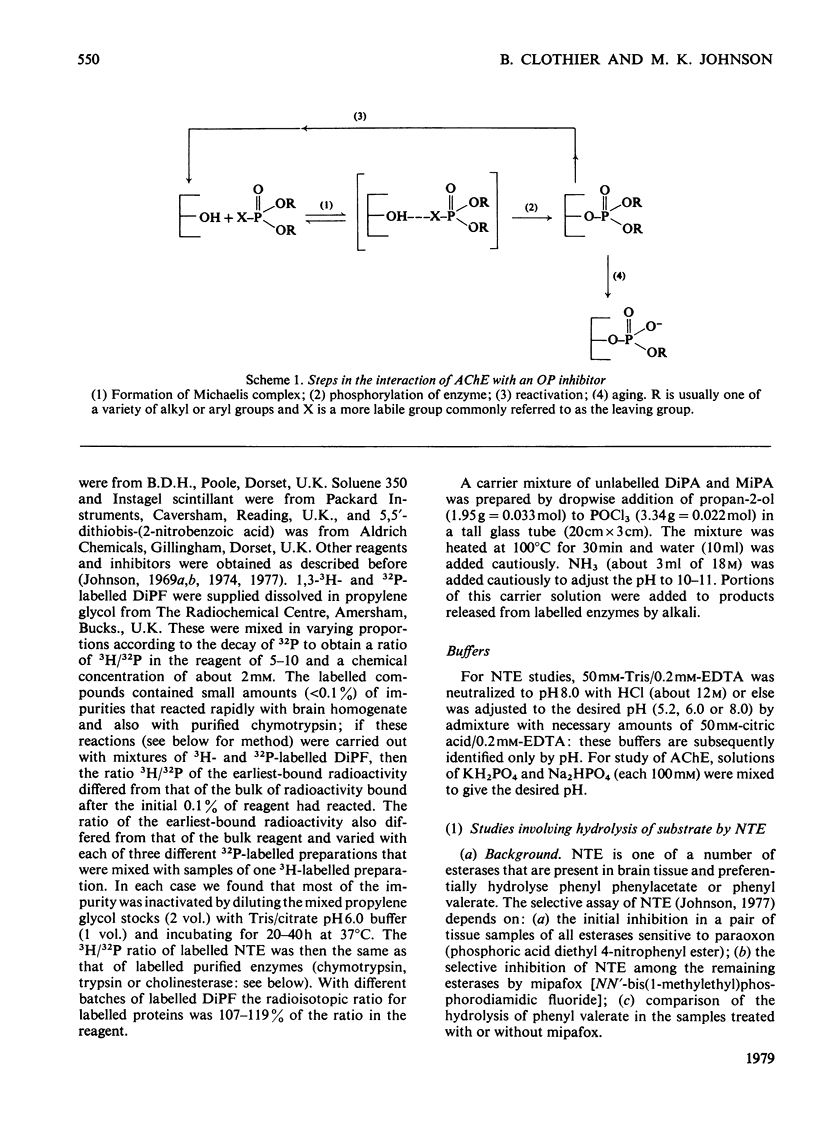
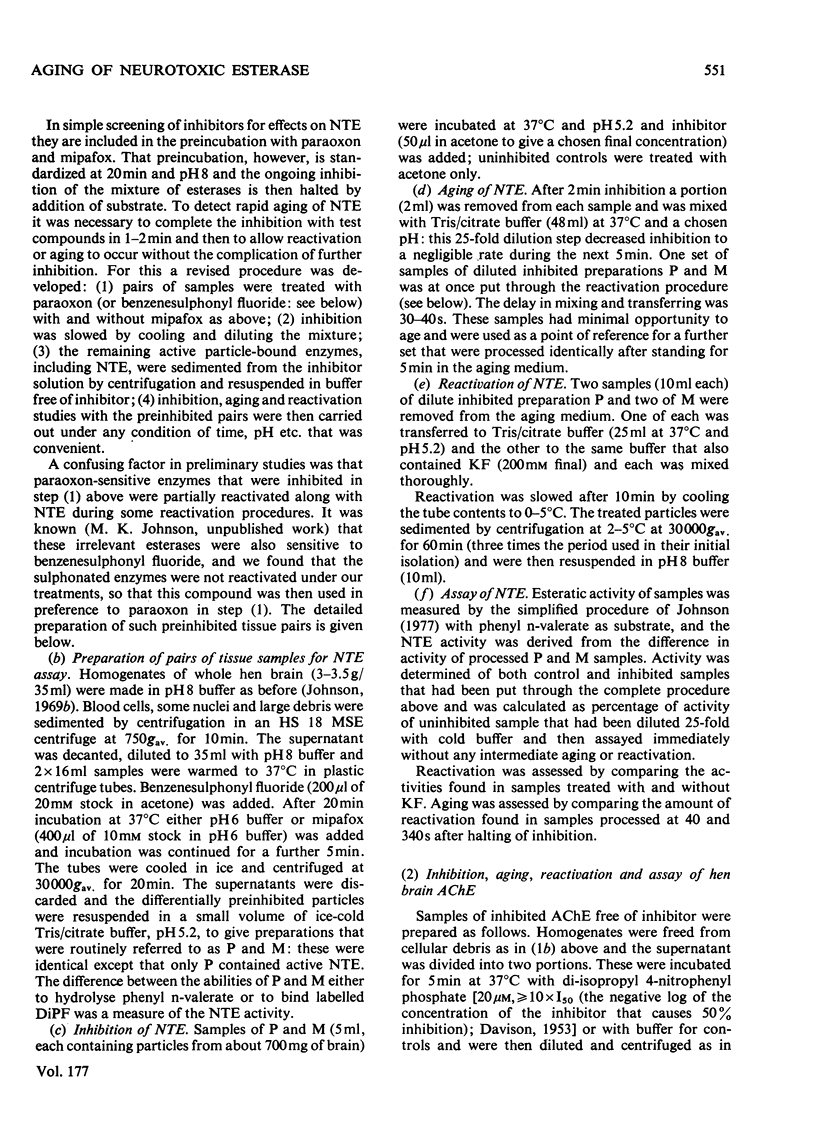
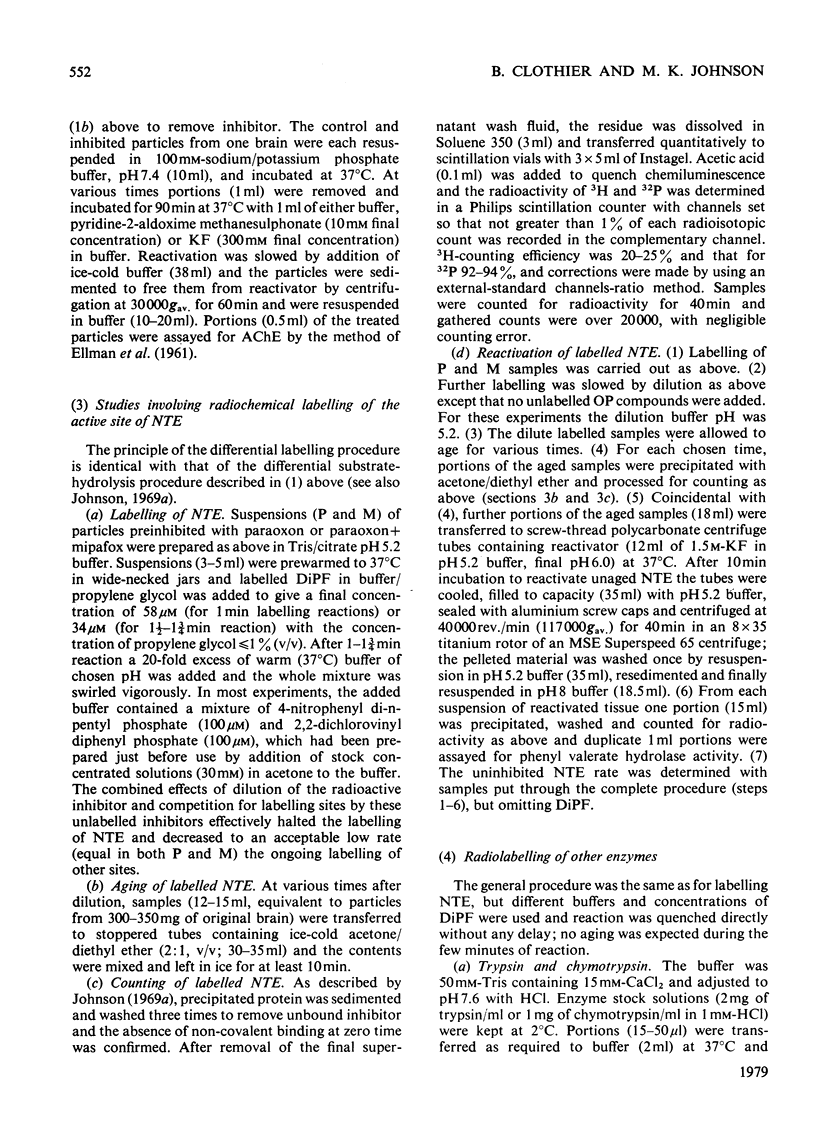
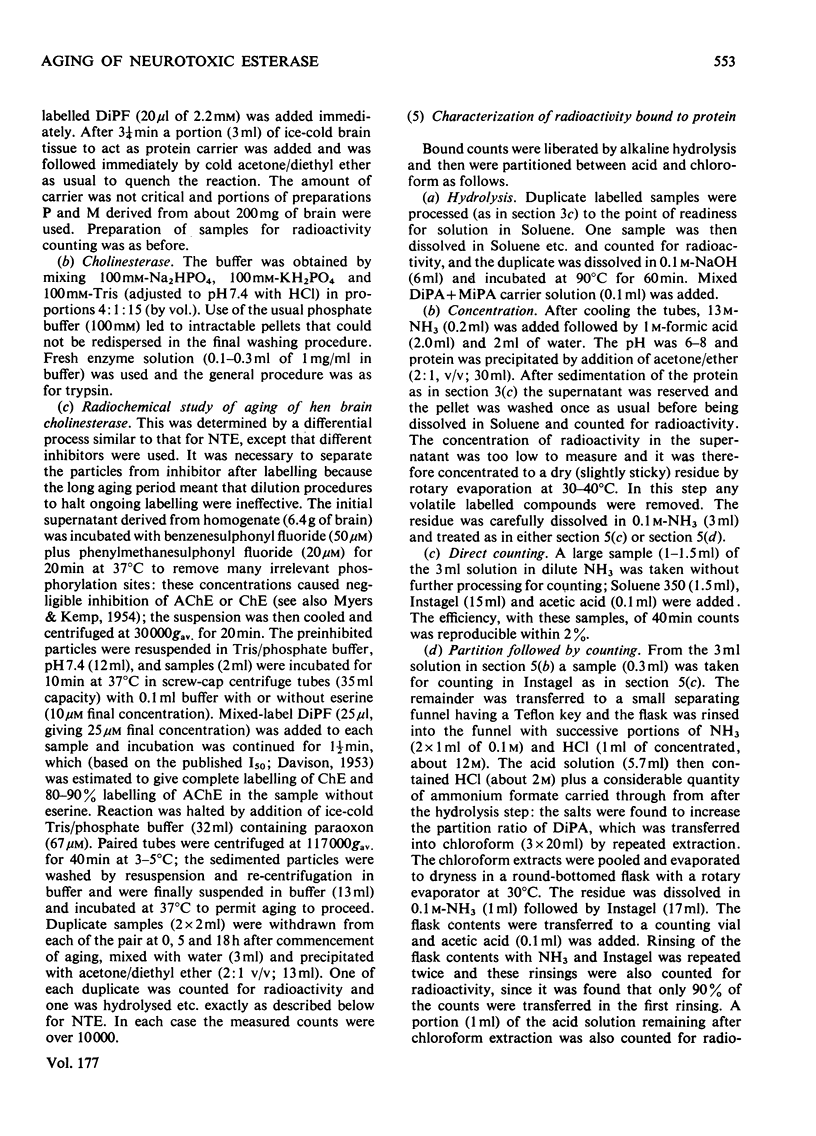
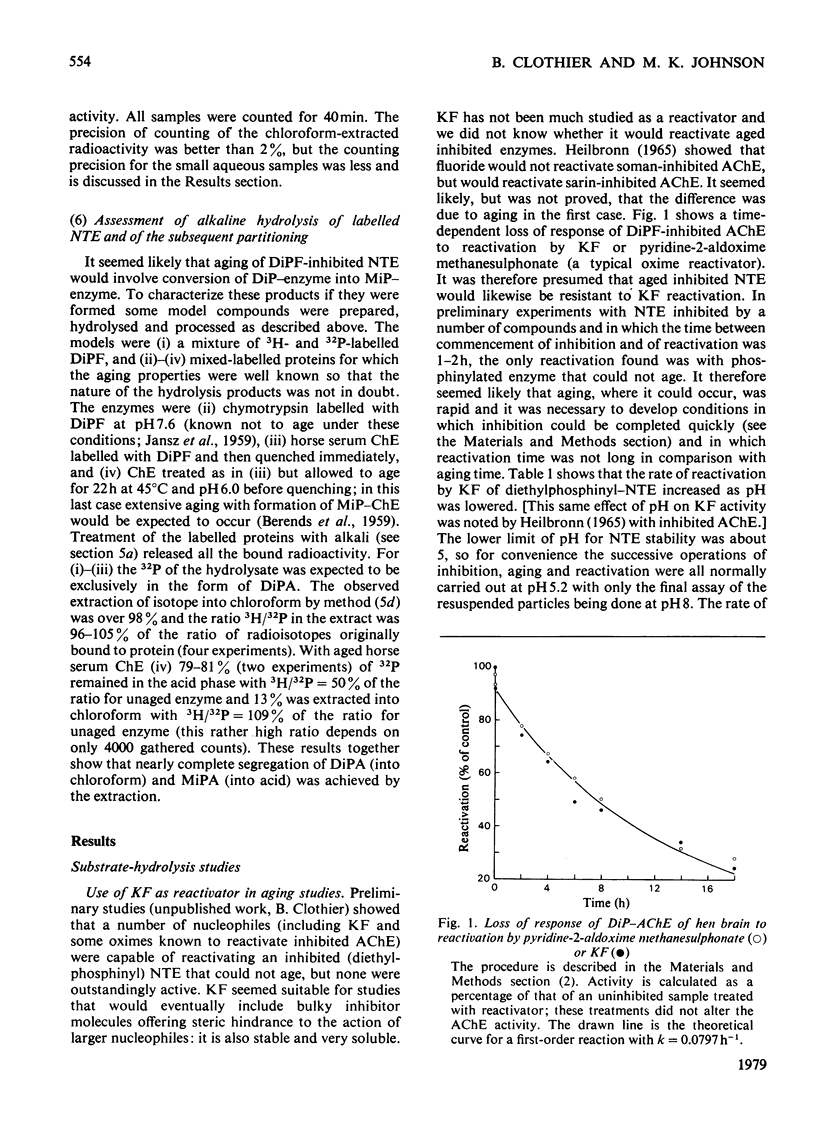
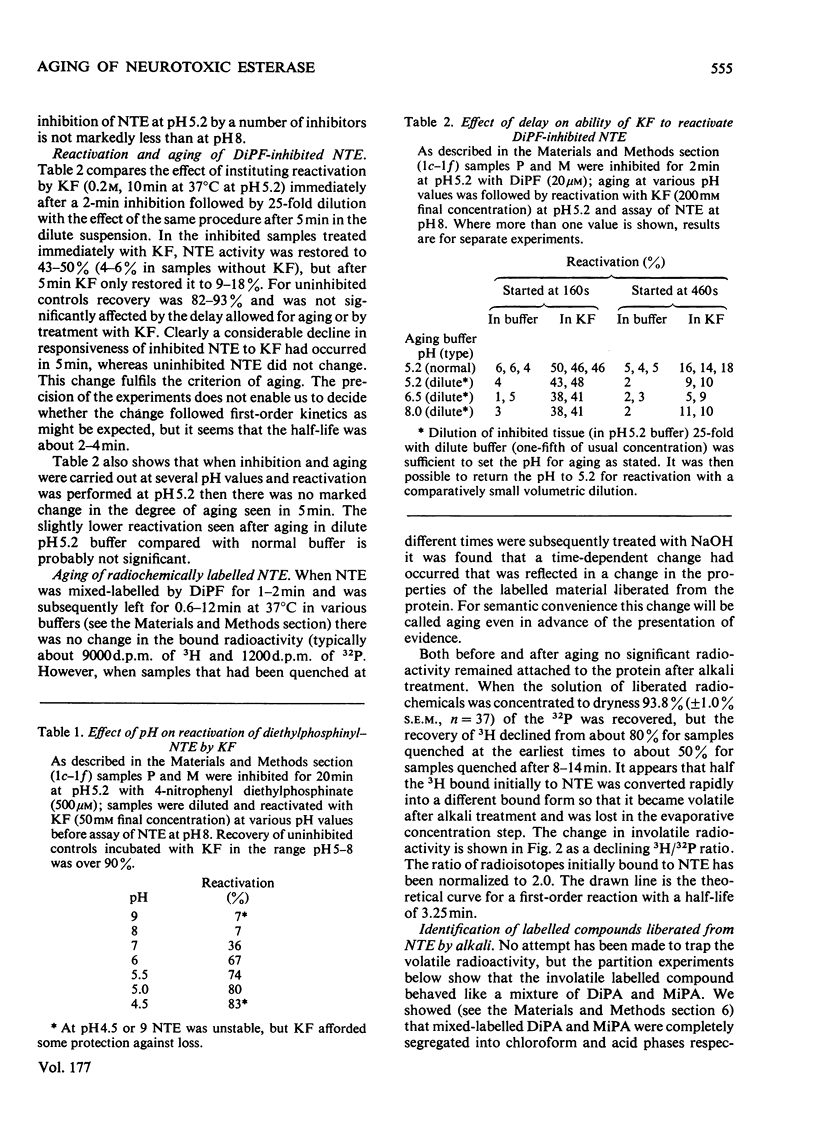
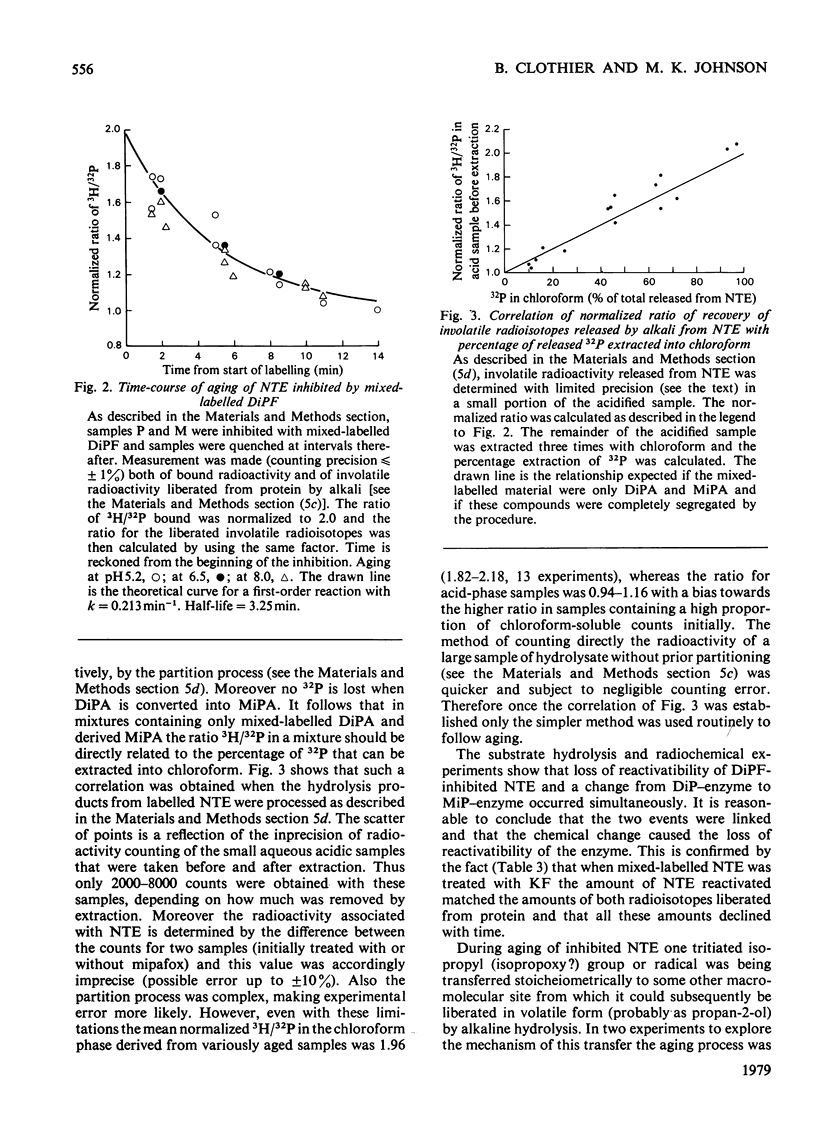
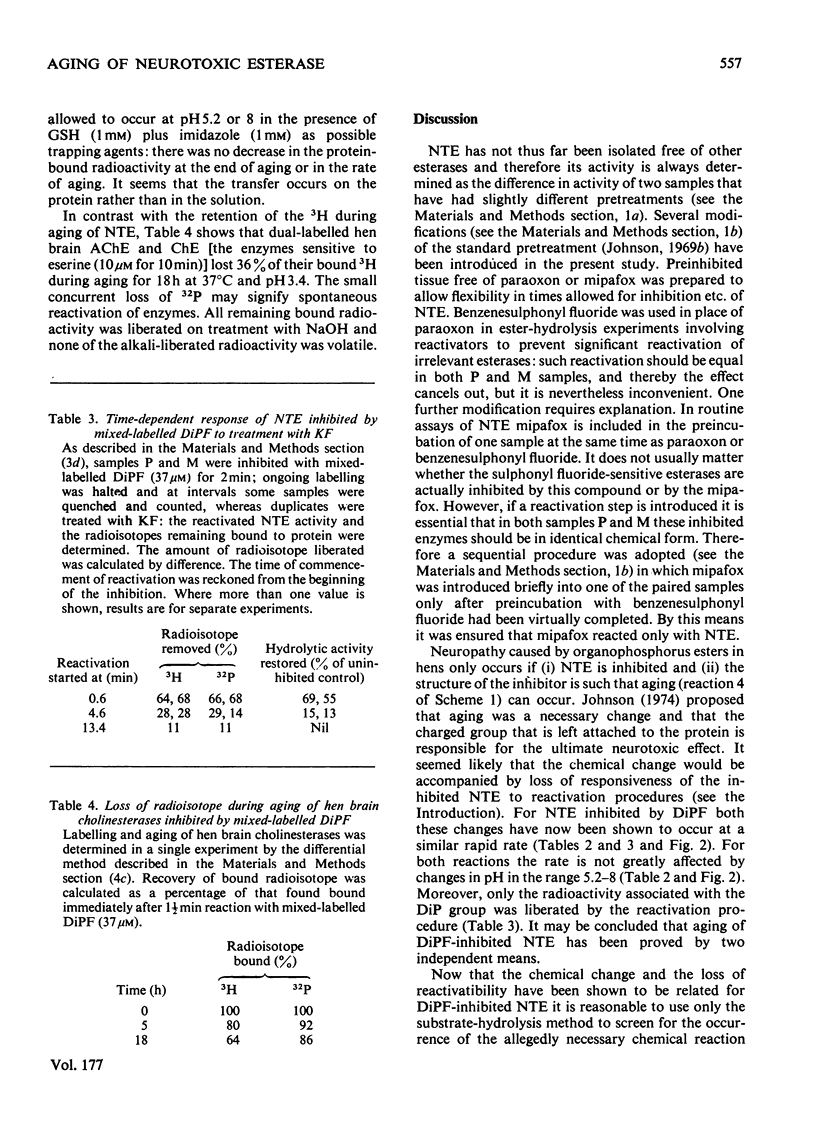
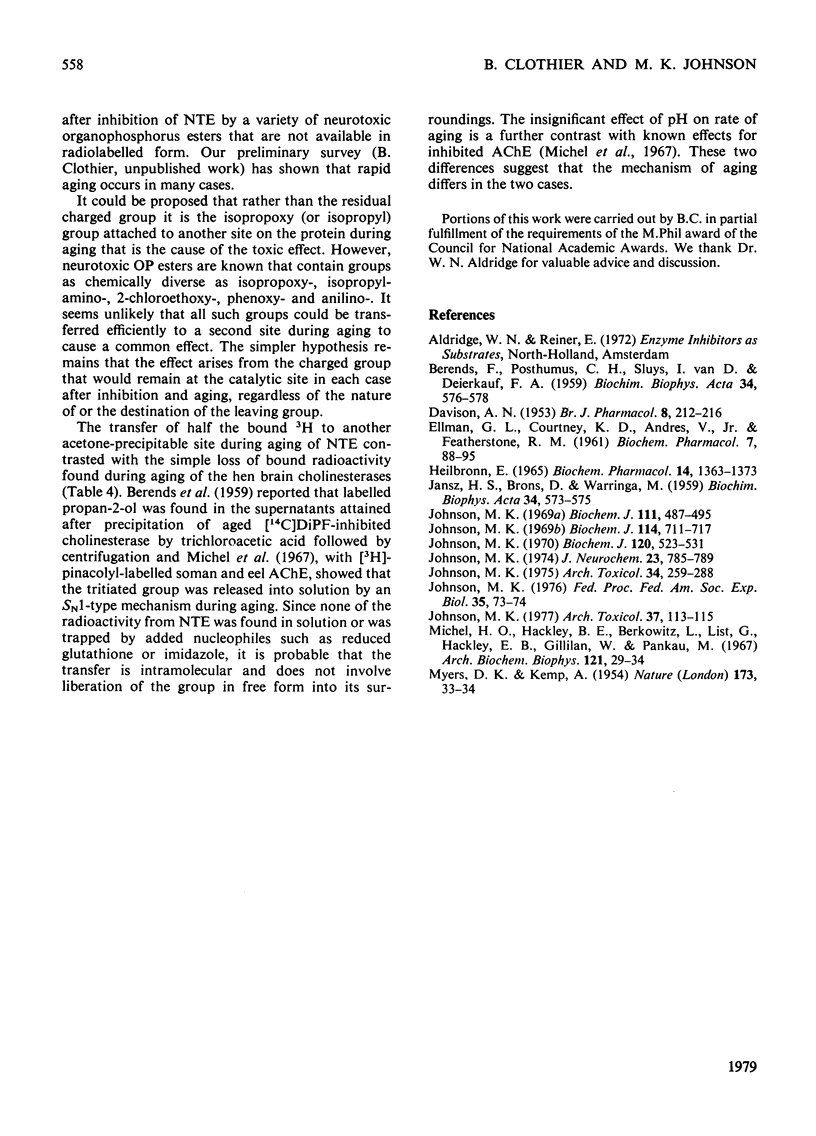
Selected References
These references are in PubMed. This may not be the complete list of references from this article.
- DAVISON A. N. Some observations on the cholinesterases of the central nervous system after the administration of organo-phosphorus compounds. Br J Pharmacol Chemother. 1953 Jun;8(2):212–216. doi: 10.1111/j.1476-5381.1953.tb00781.x. [DOI] [PMC free article] [PubMed] [Google Scholar]
- ELLMAN G. L., COURTNEY K. D., ANDRES V., Jr, FEATHER-STONE R. M. A new and rapid colorimetric determination of acetylcholinesterase activity. Biochem Pharmacol. 1961 Jul;7:88–95. doi: 10.1016/0006-2952(61)90145-9. [DOI] [PubMed] [Google Scholar]
- Heilbronn E. Action of fluoride on cholinesterase. II. In vitro reactivation of cholinesterases inhibited by organophosphorous compounds. Biochem Pharmacol. 1965 Sep;14(9):1363–1373. doi: 10.1016/0006-2952(65)90120-6. [DOI] [PubMed] [Google Scholar]
- JANSZ H. S., BRONS D., WARRINGA M. G. Chemical nature of the DFP-binding site of pseudocholinesterase. Biochim Biophys Acta. 1959 Aug;34:573–575. doi: 10.1016/0006-3002(59)90320-8. [DOI] [PubMed] [Google Scholar]
- Johnson M. K. A phosphorylation site in brain and the delayed neurotoxic effect of some organophosphorus compounds. Biochem J. 1969 Feb;111(4):487–495. doi: 10.1042/bj1110487. [DOI] [PMC free article] [PubMed] [Google Scholar]
- Johnson M. K. Improved assay of neurotoxic esterase for screening organophosphates for delayed neurotoxicity potential. Arch Toxicol. 1977 Jun 18;37(2):113–115. doi: 10.1007/BF00293860. [DOI] [PubMed] [Google Scholar]
- Johnson M. K. Mechanism of protection against the delayed neurotoxic effects of organophosphorus esters. Fed Proc. 1976 Jan;35(1):73–74. [PubMed] [Google Scholar]
- Johnson M. K. Organophosphorus and other inhibitors of brain 'neurotoxic esterase' and the development of delayed neurotoxicity in hens. Biochem J. 1970 Dec;120(3):523–531. doi: 10.1042/bj1200523. [DOI] [PMC free article] [PubMed] [Google Scholar]
- Johnson M. K. Organophosphorus esters causing delayed neurotoxic effects: mechanism of action and structure activity studies. Arch Toxicol. 1975 Dec 18;34(4):259–288. doi: 10.1007/BF00353848. [DOI] [PubMed] [Google Scholar]
- Johnson M. K. The delayed neurotoxic effect of some organophosphorus compounds. Identification of the phosphorylation site as an esterase. Biochem J. 1969 Oct;114(4):711–717. doi: 10.1042/bj1140711. [DOI] [PMC free article] [PubMed] [Google Scholar]
- Johnson M. K. The primary biochemical lesion leading to the delayed neurotoxic effects of some organophosphorus esters. J Neurochem. 1974 Oct;23(4):785–789. doi: 10.1111/j.1471-4159.1974.tb04404.x. [DOI] [PubMed] [Google Scholar]
- MYERS D. K., KEMP A., Jr Inhibition of esterases by the fluorides of organic acids. Nature. 1954 Jan 2;173(4392):33–34. doi: 10.1038/173033a0. [DOI] [PubMed] [Google Scholar]
- Michel H. O., Hackley B. E., Jr, Berkowitz L., List G., Hackley E. B., Gillilan W., Pankau M. Ageing and dealkylation of Soman (pinacolylmethylphosphonofluoridate)-inactivated eel cholinesterase. Arch Biochem Biophys. 1967 Jul;121(1):29–34. doi: 10.1016/0003-9861(67)90006-9. [DOI] [PubMed] [Google Scholar]


